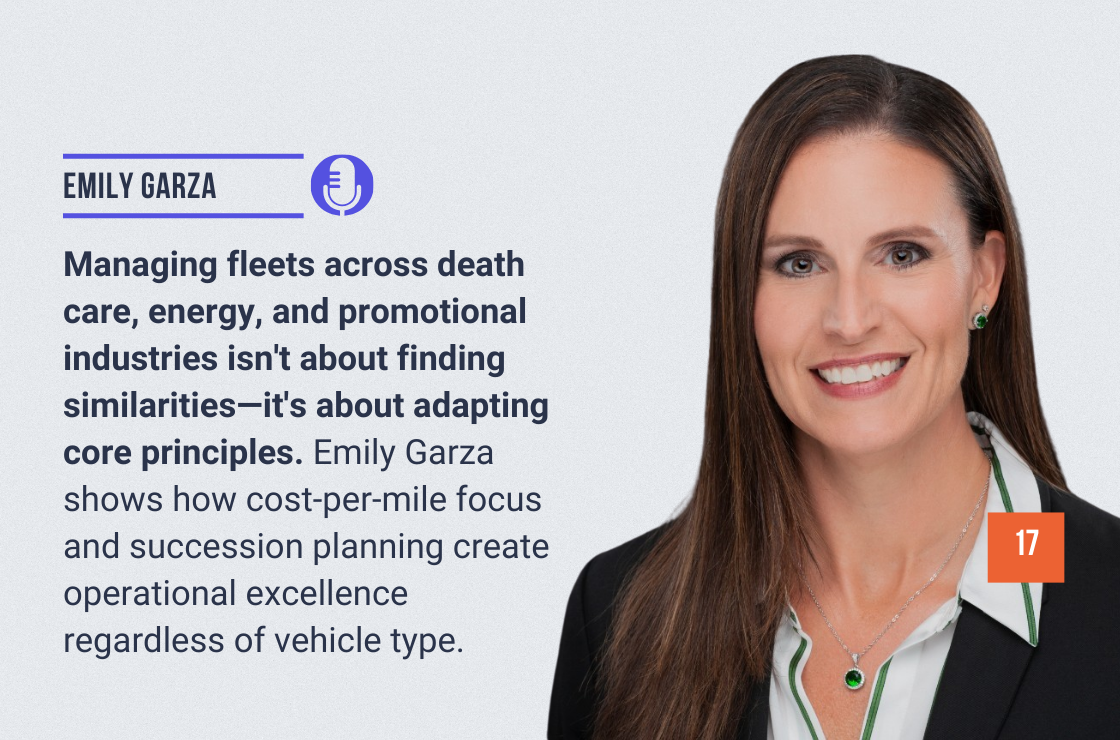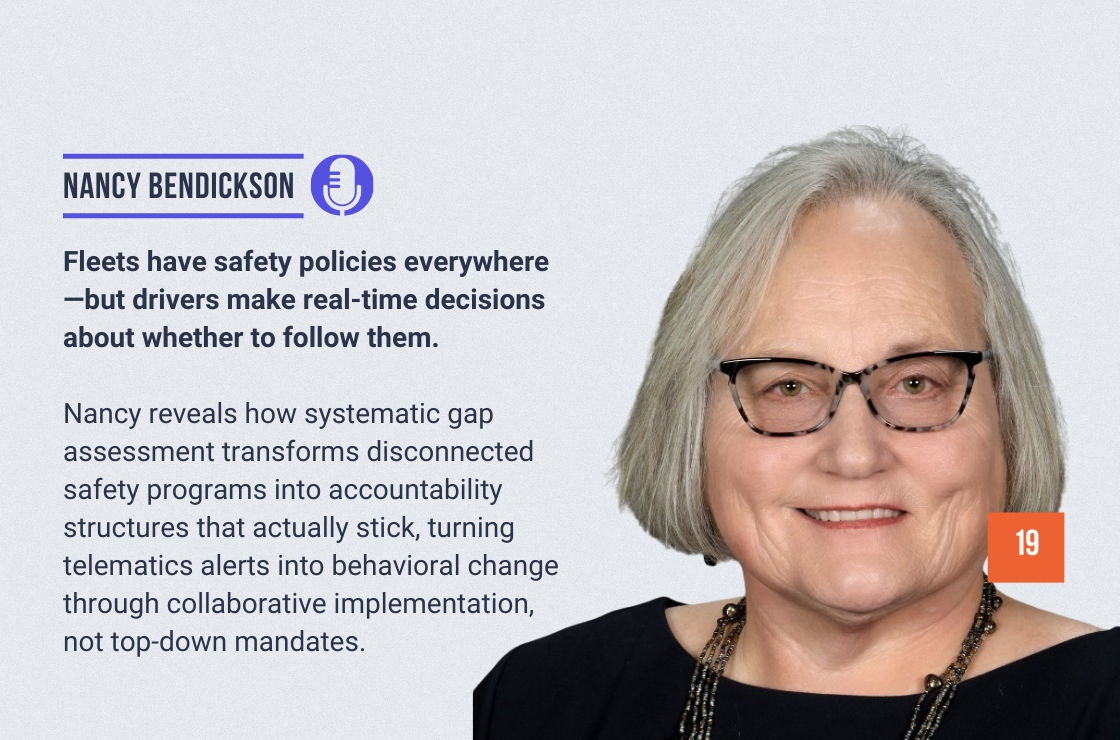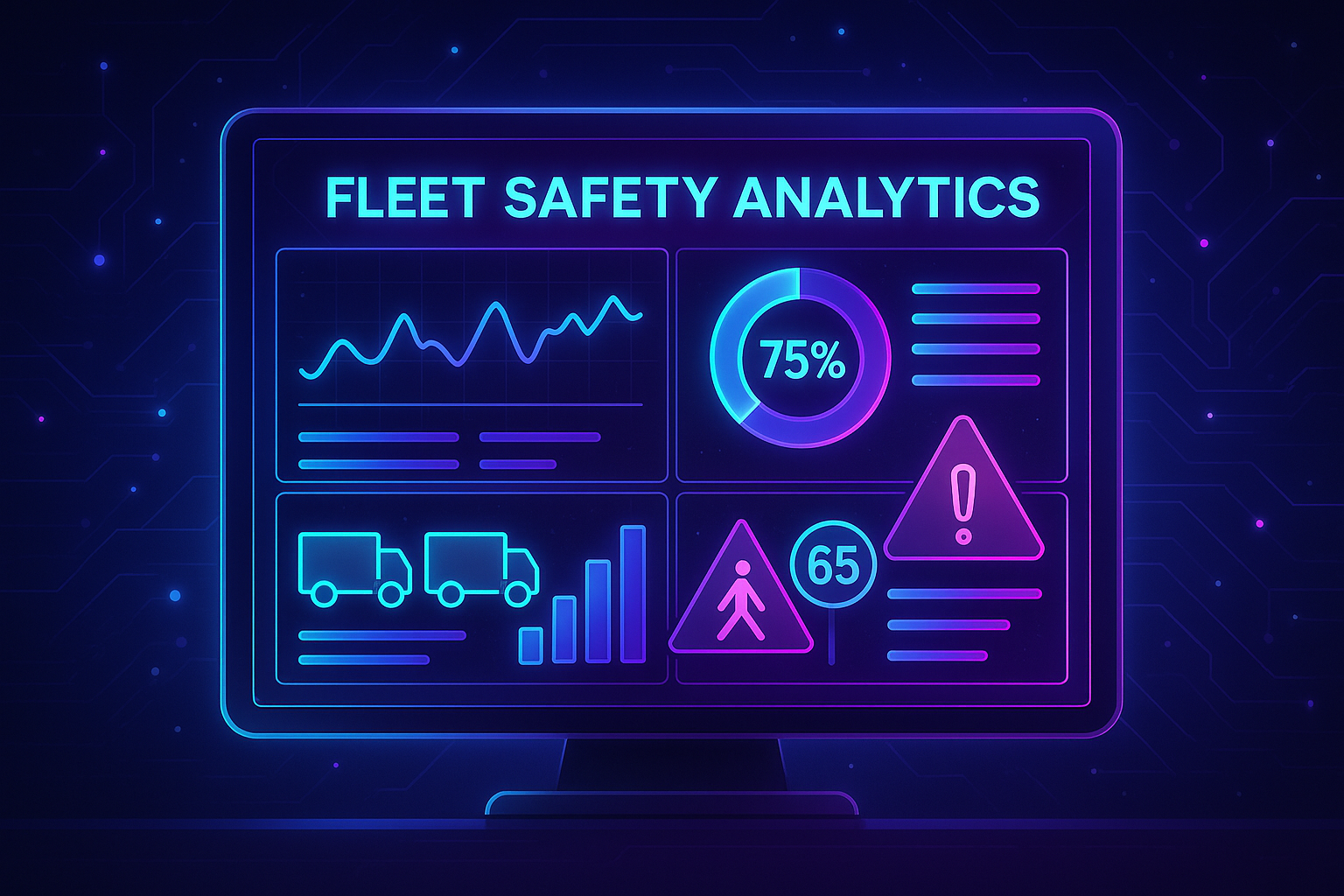Emily Garza is a seasoned fleet leader with experience spanning both the private sector and fleet management companies. Emily has built a reputation for driving efficiency, optimizing vehicle acquisition strategies, and leading teams through change with sharp focus on cost savings, compliance, and operational excellence. She’s managed fleets across organizations like Rivian, Arch Rock, and Red Bull, and now serves as Fleet Asset Manager at Sempra Infrastructure. Beyond her technical expertise, Emily is known as a collaborative team player, skilled negotiator, and fun fact—an avid proofreader and copy editor who brings precision to everything she does. With her background in English from Southern Illinois University and years of hands-on leadership, Emily blends analytical insight with clear communication, a combination that has made her an agent of change throughout her career.
Here’s a glimpse of what you’ll learn:
- [01:30] Emily’s unexpected journey from planning law school to two decades in fleet management
- [03:45] Strategies for attracting more women to fleet through mentorship and industry associations
- [05:20] The most unusual fleets: from hearses and limos to Mini Coopers with coolers and mobile DJ booths
- [07:15] Emily’s classic “how many bodies” story from a Ford Fleet preview event
- [09:30] Taking on new challenges: expanding fleet operations into Mexico and learning Spanish
- [12:00] Common misconceptions about fleet management: “It’s not easy—there are a lot of moving parts”
- [14:15] The explosion of fleet technology: from telematics to AI, predictive analytics, and data security
- [16:45] Key metrics that matter: cost per mile, total cost of ownership, and rightsizing fleets
- [18:30] “Nobody gets safer by doing nothing” – the evolution from Big Brother to protective technology
- [21:00] Coaching vs. punishment: using data to analyze driving environments, not drivers
- [23:15] The value of NAFA’s CAFM program and succession planning in fleet management
- [26:30] Current challenges: tariffs, supply chain disruptions, and the sustainability push
- [29:00] Essential advice for newcomers: embrace chaos, manage up, and get an emotional support dumpster fire
In this episode…
Fleet management isn’t rocket science—unless you’re managing NASA’s fleet, in which case it literally is. But for everyone else, the complexity lies in the countless moving parts, evolving technology, and the misconception that fleet work is somehow simple or straightforward. How do you navigate an industry that’s constantly changing while building the expertise needed to lead effectively?
According to Emily Garza, Fleet Asset Manager at Sempra Infrastructure, success comes from embracing the chaos and never stopping the learning process. With experience managing everything from hearses to Red Bull’s promotional vehicles, Emily has seen how fleet complexity varies dramatically across industries. She emphasizes that while fleet management has evolved from basic vehicle procurement to sophisticated data analytics and global operations, the fundamentals remain the same: focus on cost control, safety, and building strong industry relationships.
In this episode of RoadRageous, host Chad Lindholm sits down with Emily to explore her unconventional career path and the lessons learned from managing diverse fleets across multiple industries. They discuss the importance of mentorship for women entering the field, how technology has transformed fleet operations, and why succession planning isn’t just nice to have—it’s critical for organizational success.
Quotable Moments:
- “I did not embark on a lifelong quest to manage fleet vehicles. I took my first job at Enterprise so I could work for a year or two and then eventually go back to law school.”
- “How many bodies do you think I can fit in there? I work in the death care industry—I don’t just have a habit of offing people and throwing them in the back of vans.”
- “The most common incorrect assumption is that fleet is easy. It’s not brain surgery or rocket science, but there’s a lot of moving parts.”
- “Nobody gets safer by doing nothing. Safety is such an important aspect of fleet these days.”
- “We analyze the driving environment, not pinpoint the driver themselves. We look at trends, not one-offs.”
- “Succession planning isn’t a nice to have—it’s critical.”
- “Embrace the chaos, manage up, and never stop networking or educating yourself.”
- “Get yourself an emotional support dumpster fire. Sometimes he listens to me vent, sometimes he just sits there patiently.”
Action Steps:
- Invest in professional development: Pursue certifications like NAFA’s CAFM program to build comprehensive fleet knowledge
- Join industry associations: Participate in NAFA, AFLA, and Women in Fleet Management for education and networking
- Focus on key metrics: Track cost per mile, total cost of ownership, utilization rates, and driver behavior scorecards
- Use coaching over punishment: Analyze driving trends and environments rather than targeting individual incidents
- Build strong industry networks: Cultivate relationships with fleet professionals who can provide expertise and support
- Plan for succession: Develop internal talent and document processes to ensure organizational continuity
- Embrace continuous learning: Stay current with evolving technology, regulations, and industry best practices
- Approach safety proactively: Use telematics and cameras as protective tools rather than surveillance measures
Navigating Fleet Complexity Through Experience and Adaptation
In a recent episode of RoadRageous, host Chad Lindholm welcomed Emily Garza, Fleet Asset Manager at Sempra Infrastructure, to discuss her diverse career journey and insights into modern fleet management challenges. The conversation highlighted how fleet operations have evolved from simple vehicle procurement to complex, data-driven operations requiring continuous learning and adaptation.
Breaking Into Fleet Management
Emily shared her unconventional entry into fleet management, starting at Enterprise with plans to eventually attend law school—a detour that became a two-decade career. Her English major background proved unexpectedly valuable, bringing analytical precision and communication skills to an industry increasingly focused on data interpretation and stakeholder management.
Key Discussion Points:
- Industry Diversity and Unique Challenges: Emily’s experience managing unusual fleets—from death care vehicles to Red Bull’s promotional Mini Coopers—demonstrates how fleet management principles adapt across vastly different operational requirements.
- Women in Fleet Leadership: The discussion emphasized the importance of industry associations like Women in Fleet Management (WIFM) and mentorship programs in attracting and retaining women in the traditionally male-dominated field.
- Technology Evolution and Data Management: The rapid advancement from basic telematics to AI-powered predictive analytics has created both opportunities and challenges, including data security concerns and information overload.
- Metrics-Driven Decision Making: Emily highlighted essential KPIs including cost per mile, total cost of ownership, utilization tracking, and driver behavior scorecards as fundamental tools for fleet optimization.
- Safety Culture Development: The shift from “Big Brother” surveillance to protective technology has transformed how organizations approach driver safety, emphasizing coaching over punishment.
- Global Operations Expansion: Emily’s upcoming responsibilities in Mexico illustrate the complexities of international fleet management, from regulatory differences to language barriers and remote maintenance challenges.
Professional Development and Succession Planning
A significant portion of the conversation focused on the importance of continuous education and knowledge transfer. Emily emphasized the value of NAFA’s Certified Automotive Fleet Manager (CAFM) program and the critical need for succession planning in fleet organizations.
Current Industry Challenges
The episode addressed contemporary challenges including tariff impacts on vehicle pricing, supply chain disruptions affecting parts availability, volatile fuel costs, and the ongoing push for sustainability initiatives that don’t always align with operational realities.
Conclusion:
Emily’s insights demonstrate that successful fleet management requires embracing complexity while maintaining focus on fundamental principles: cost control, safety excellence, and relationship building. As the industry continues evolving through technological advancement and global expansion, the ability to adapt while leveraging strong professional networks becomes increasingly valuable for fleet leaders at all levels.
Resources mentioned in this episode:
Sponsor for this episode:
This episode is brought to you by IMPROVLearning.
At IMPROVLearning, we’re dedicated to transforming driver education through innovative, research-backed training methods.
Our SPIDER™ Driver Training platform combines humor with proven brain-training techniques to help drivers anticipate and avoid potential dangers on the road.
With over four million students trained, we know that learning sticks best when it’s engaging, short, and actively tested — resulting in fewer crashes, violations, and safer drivers overall.
To learn more about how IMPROVLearning makes roads safer one driver at a time, visit improvlearning.com.











